1964 Chevrolet Corvair Monza Spyder: Ahead of the turbo curve
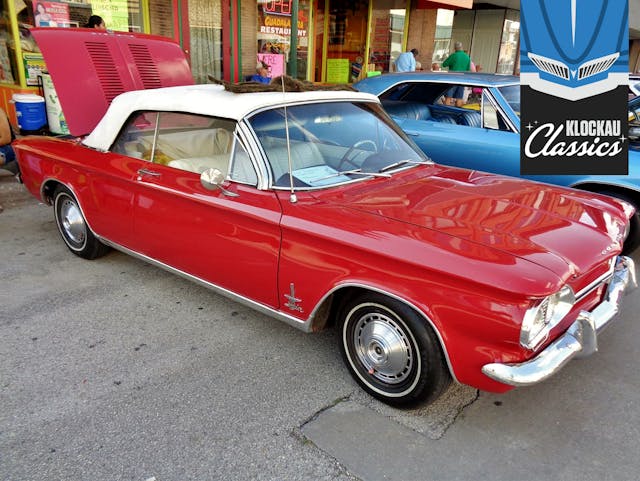
The Chevrolet Corvair has always been a popular collector car. And why not? A Corvair is the most unique American car of its time, fun to drive, readily available at reasonable cost, and has a dedicated club—the Corvair Society of America (CORSA). While the 1965–69 Corvairs are especially attractive, I’ve always had a soft spot for the original 1960–64 models. One of the more interesting early Corvairs is the turbocharged 1962–64 Monza Spyder. Its biggest claim to fame? It, along with the Oldsmobile Jetstar, was one of the earliest U.S.-built turbocharged cars.
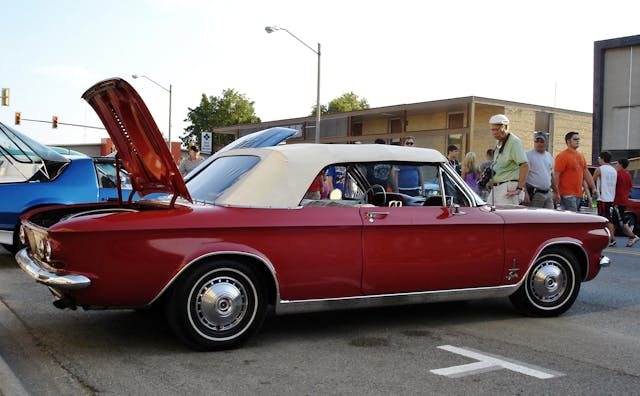
The 1962 year was a big one for the Corvair, with the debut of the long-anticipated Monza convertible. Sharing a 108-inch wheelbase and 180-inch overall length with its sedan and coupe siblings, the convertible offered plenty of drop-top, bucket-seat, rear-engine enjoyment.
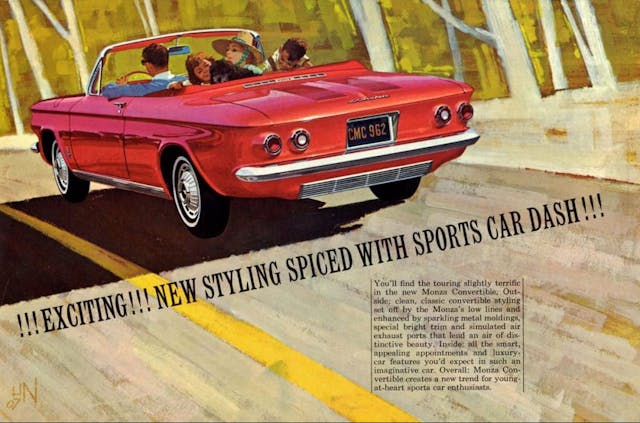
It’s unclear why a convertible version wasn’t offered from the beginning, but perhaps Chevrolet felt it wouldn’t fit the Corvair’s originally intended role as a plain-Jane, American VW alternative–—or at least it did until early 1960, when the Monza coupe brought some pizazz to the lineup. It was an immediate hit.
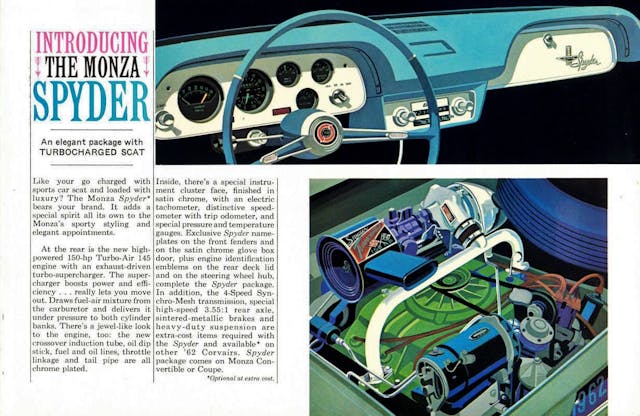
But there was more than just a new Monza convertible. Optional on 1962 Monza coupes and soft tops (and introduced at about the same time as the Monza convertible) was a turbocharged variant of the 145-cubic-inch flat-six. Now Corvair buyers could skip the standard 80-horsepower (and optional 102-hp) engines for a turbocharged version that produced 150 hp at 4400 rpm. It arrived just a few months after the turbo Oldsmobile Cutlass Jetfire.
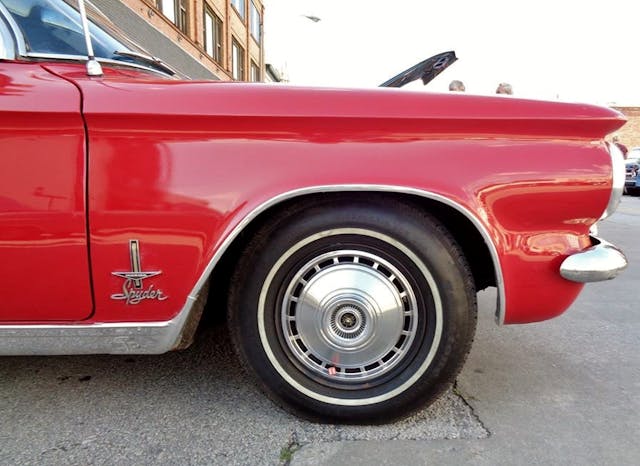
The extra cost for the Spyder was $317.45—a considerable sum for back then (equal to about $2735 today), but not a bad buy considering it virtually doubled your Monza’s horsepower. Air conditioning, the three-speed stick, and the Powerglide automatic were not available—so as not to hinder the Spyder’s performance potential—and the four-speed stick was mandatory. Other Spyder special features included full instrumentation with tachometer, a 120-mph speedometer, Spyder logos on the front fenders, and extra-cool spider logos on the wheel covers.
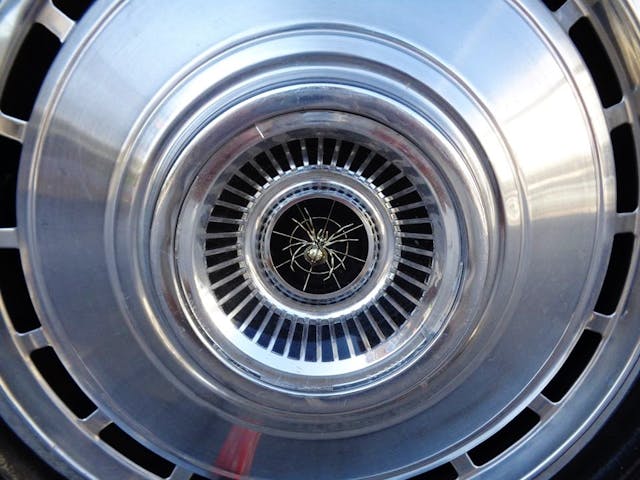
Technically, the Spyder was an option package for the Monza, but most of the press and buying public regarded it as a separate model. At the time, GM was really pushing the envelope, technologically speaking, as evidenced by the Corvair’s turbo mill, not to mention the Corvette’s independent rear suspension, small-block soon-to-be-Rover Buick V-8, and the “rope drive” Tempest.
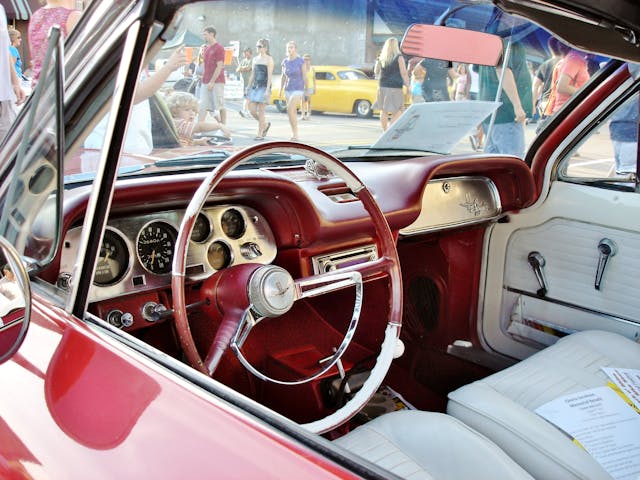
A total of 6894 Spyder coupes and 2574 convertibles were sold for 1962, and the Spyder continued for ’63. Along with the rest of the Corvair lineup, the Spyder received new trim and upholstery but otherwise stayed pretty much the same. It would prove to be the model’s best sales year, with 11,267 Spyder coupes and 7472 convertibles going to happy new owners.
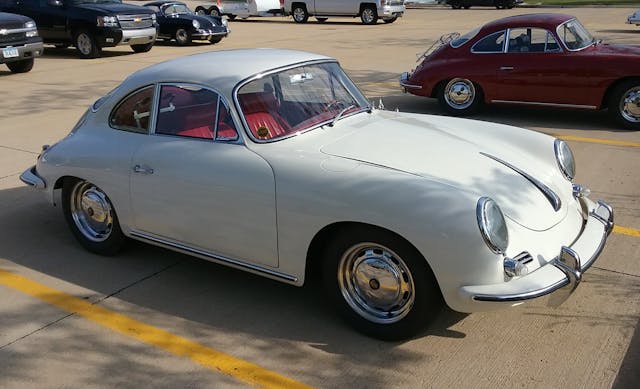
I can understand the attraction. Over at Porsche, the four-cylinder 356 sported 90 horsepower in its penultimate Super 90 form. Yet it cost almost 50 percent more than a Spyder coupe. Yes, the 356 Carrera 2 offered 155 hp (and the all-new flat-six 911 was just around the corner), but it was very expensive, and its four-cam engine was, ahem, rather temperamental—not a good choice for a daily driver.
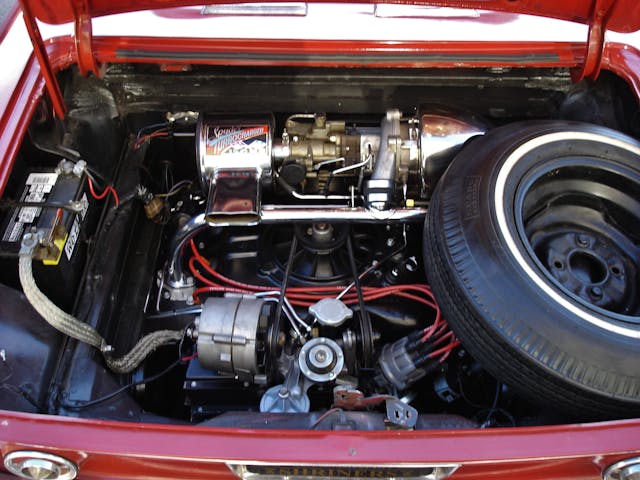
Although 1964 was the last year for the original Corvair, a number of worthwhile improvements were added nonetheless. In the engine department, displacement in the individually-finned, cast-iron cylinder barrels was increased to 164 cubic inches. The Spyder held at 150 hp, but its peak power now came a bit sooner, at 4000 rpm. That enhanced its low-speed torque and reduced turbo lag, somewhat.
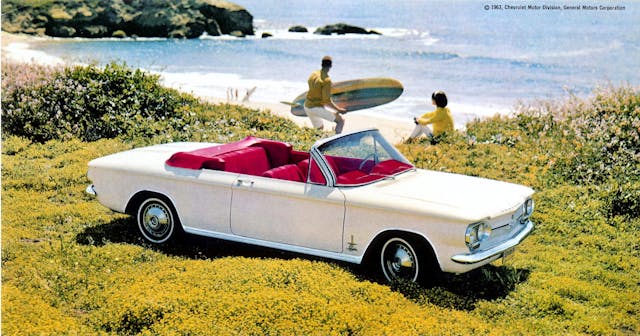
A worthwhile improvement shared with the other 1964 Corvairs was redesigned engine hardware and gaskets designed to improve oil sealing on the rocker arm covers. Also new—at long last—was the transverse rear leaf camber-compensating spring that GM’s bean counters had denied the original 1960 model.

A total of 199,387 Corvairs were built for ’64, compared with the 254,571 sold the previous year. Its basic body had been around since late 1959, which may have hindered sales in a market of annual model changes and biennial major sheetmetal changes. Complicating matters (and perhaps the biggest reason for the downturn) was the April 1964 smash introduction of the Ford Mustang, which no doubt siphoned off many potential Corvair buyers.

The same year marked the finale of the Spyder nameplate. Sales for 1964 totaled 6480 coupes and 4761 convertibles. One of those ’64 soft-tops is our feature car today, which I spotted at two different Maple City Cruise Nights (in 2012 and ’16), in Monmouth, Illinois. I was immediately attracted to its cheerful red and white color combination. Once I realized it was a turbocharged Spyder, I got even more excited.
There are few things more fetching than a red convertible with a white interior. This one also has the optional four-speed manual—yours for an extra $92. And in the engine compartment were 150 horses of turbocharged goodness—and still room for a spare tire. Because the 1964’s larger engine had more torque, the previously mandatory four-speed had become optional, though I suspect there were very few three-speed Spyders built. It was, after all, the performance model.
While 1964 was the last year for the Spyder, it was not quite the end of the turbo engine. Among the all-new Corvairs for 1965 was the new and sporty Corsa. A normally aspirated, high-compression four-carb flat six with 140 hp was standard, but just $161 more bought a revised version of the old turbo engine, now good for 180 hp. After ’66, both it and the Corsa disappeared for good—but for one shining moment in the early- to mid-1960s, your local Chevy dealer offered something really special.
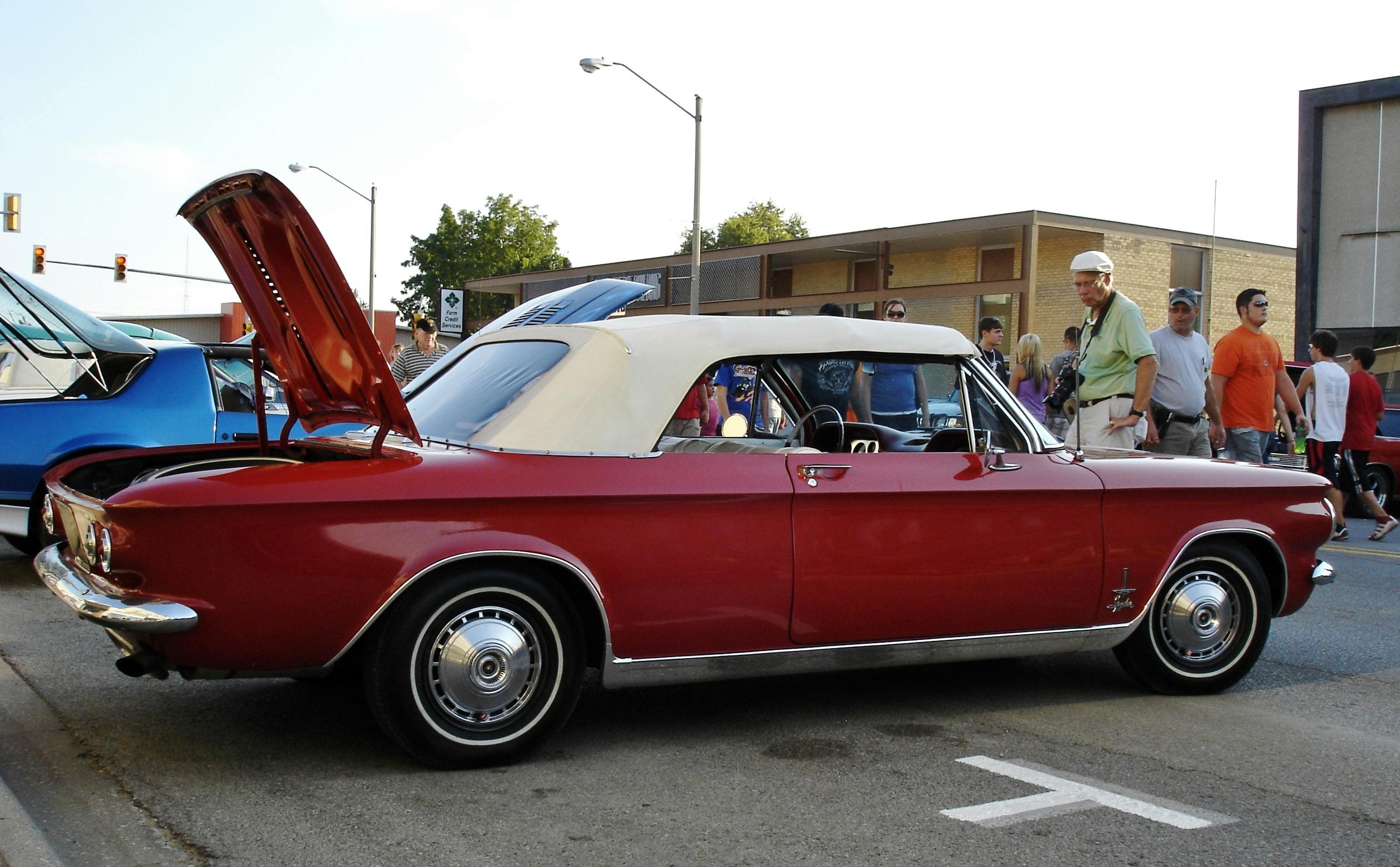
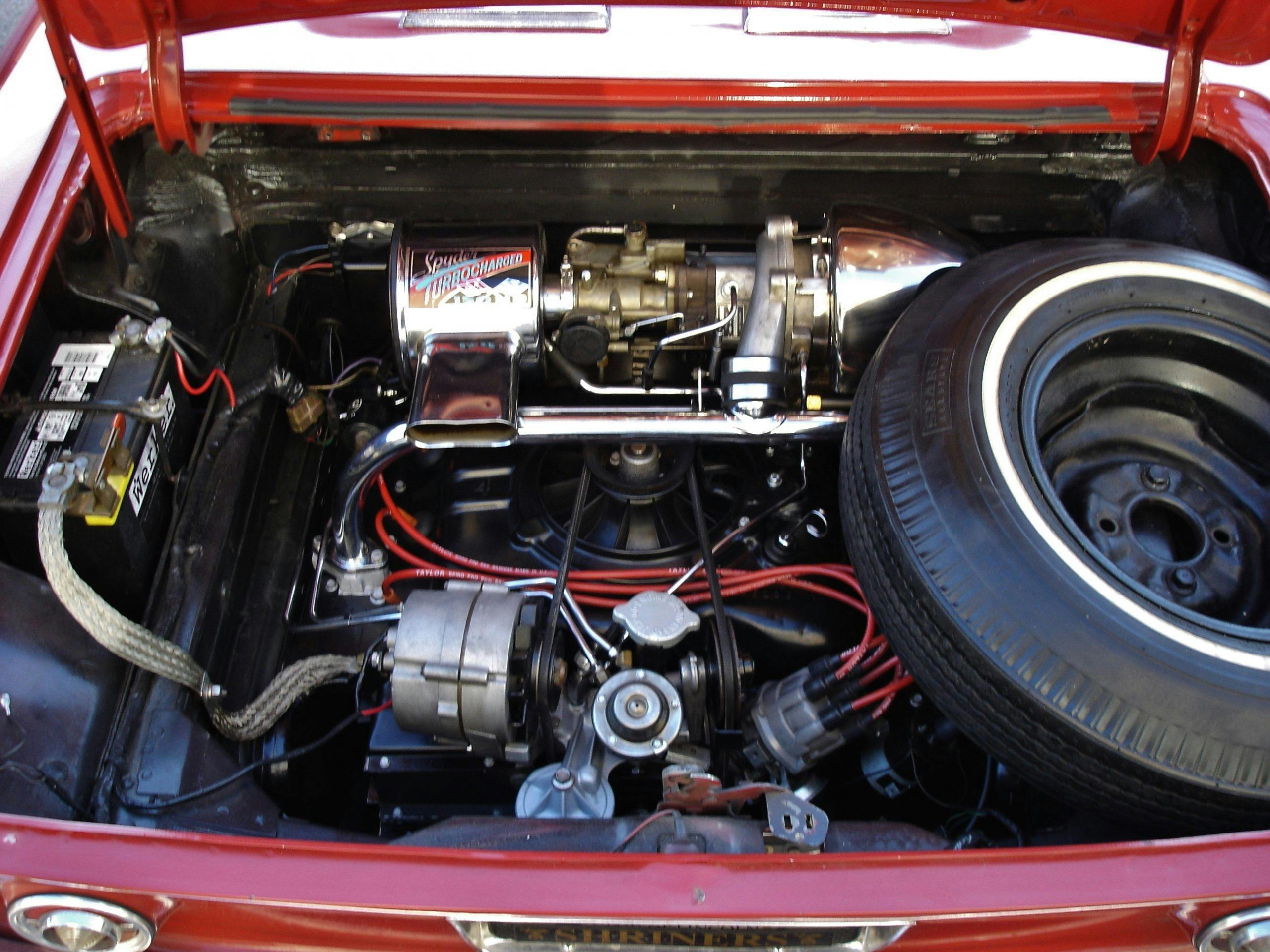
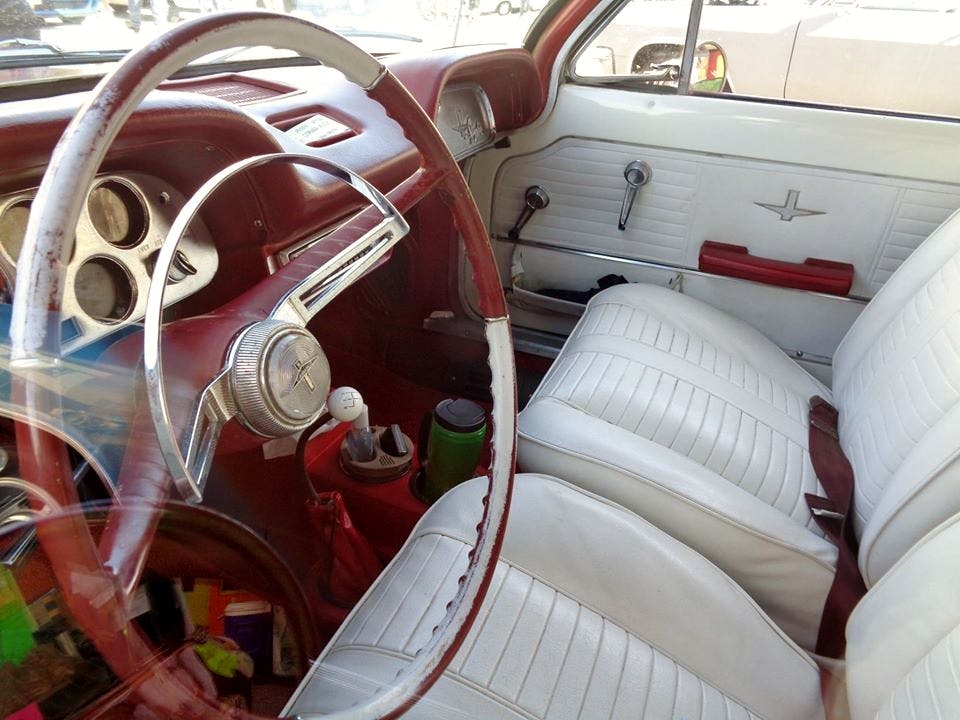
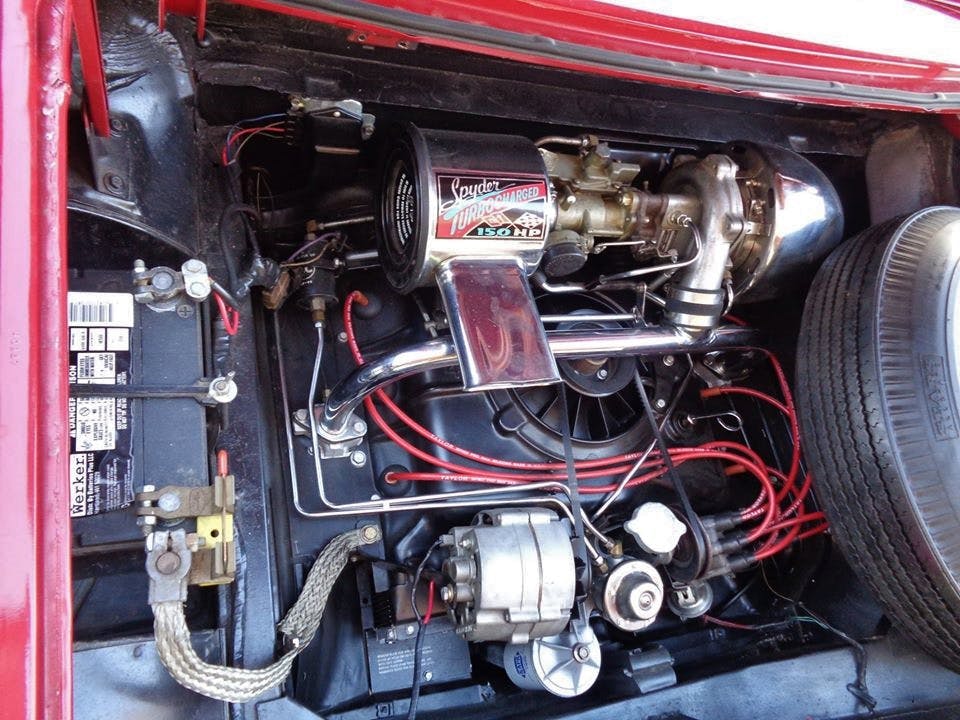
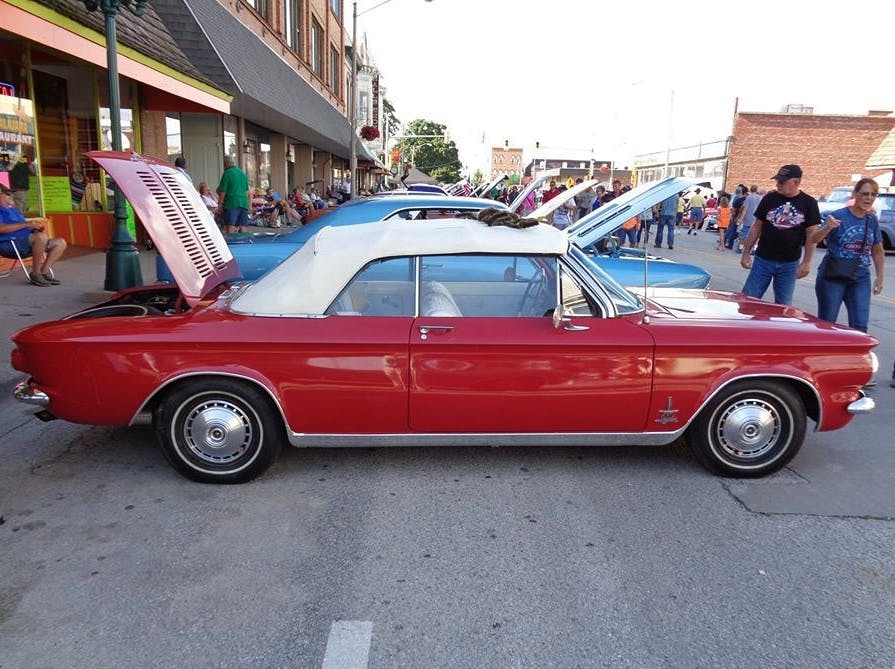



I have what you could call a restomod 1964 Corvair spyder it has a 3.2 liter custom engine with a 180 spec turbo and carburetor 4 wheel disk brakes with 14 in 5 lug wheels and completely rebuilt suspension and new hi performance tires. The paint is new the interior is good and it has no oil leaks or rust.. What do you think I should do sell or keep?
Keep!
Keep it for the “smiles per gallon” bonus. And, for your sake drive it.
What would you like to get for the car if you sold it I would like to buy it.
I am wanting information on the Corvair Spyder was factory option 2 four barrel carburetors
/ named the Tarantula ?
The Oldsmobile Turbo was introduced at the New York Auto Show in April 1962.
The Corvair Turbo was introduced at the Chicago Auto Show in March 1962.
March came before April even in 1962. The Corvair turbo came in March. Thats is a month before the second turbo.
Ralph Nader was and still is, an idiot. He needed publicity, and chose a ineptly conceived attach in an area which he had little expertise in. Now, let me tell you how I really feel.